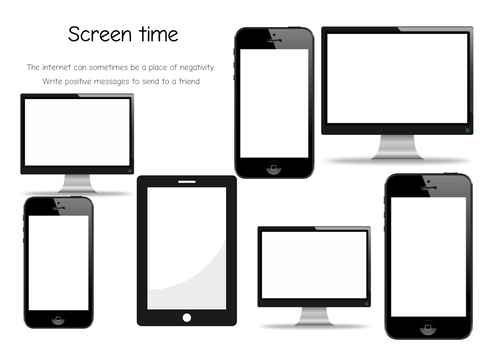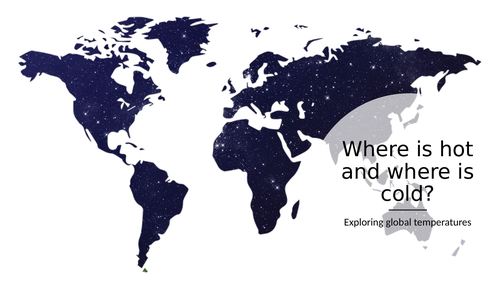37Uploads
69k+Views
47k+Downloads
All resources

Managing worries - mindful moments
A series of simple activity sheets to help children consider their worries, and how they could deal with them.
I used this as part of a “mindful moments” session during registration. There is also a set focussing on positivity and gratitude.

KS1/2 Map skills - grid references
A simple worksheet previously used in Y2/Y3 to explore grid references on maps.
Children locate countries within the grid reference on a European map. Could be used as continuous provision/independent work following other lessons.

KS1 compass directions
A simple worksheet used in continuous provision to practice using the directions of a compass.

KS1 geographical enquiry
A series of worksheets to be used for geographical inquiry with KS1. It asks children to identify features of a place, and suggest what it might be like to live there. Links also to work on city/town/village.
I originally used this as a continuous provision activity, but it could easily be part of a lesson.

KS2 Biome activies
A couple of activity sheets used in KS2 when exploring and comparing biomes around the world.

Questions for Roman Poem
Differentiated questions linked to figurative language in a poem linked to the Romans.
Can be used as part of a series of work on poetry, figurative language or generally as part of a topic on the Romans.
Ideally suited to LKS2 but could also be used in UKS2.

Example Poem linked to Romans
A poem based on the Romans to be used as a model text when teaching poetry. Contains examples of repetition, rhyme, alliteration, similes and metaphors. Suitable for KS2, or lower KS3.
A set of differented questions is also available.

WW2 comparing sources and reliability
An activity used with UKS2 to compare primary sources linked to Adolf Hitler. This could also be used in KS3.
Children are asked to compare different accounts and portrayals of Hitler, and to assess their reliability. This also links to the concept of propaganda.
Three different sets of questions are included for differentiation.

Line Guides (portrait and landscape)
A variety of line guide options that I have used across KS1 and KS2: small lines, wider lines and two handwriting paper options.
Landscape and portrait options available.

Stone to Iron Age: comparison worksheet
A set of differentiated worksheets for pupils to compare life in the Stone Age to life in the Bronze age.
Ideally suited to LKS2 but could also be used with other age groups.
An ideal activity to explore change over time.

KS2 Character Description Macbeth
An example character description for Macbeth. This was originally used in Year 5/6 but could also be used in KS3.
Includes the use of semi colons, different sentence openers, conjunctions etc.
Originally used as a model character description, this could be used as a prompt to describe Macbeth, or as a sample text to analyse for literary features.

Positivity and gratitude - mindful moments
A series of simple activity sheets to help children stay calm, positive and recognise what they are grateful for.
I used this as part of a “mindful moments” session during registration. There is also a set focussing on dealing with worries.

Intro to the Stone Age (timelines)
Need some help with your Stone Age-Iron Age topic?
This is an introductory lesson on the Stone Age. Contains a powerpoint explaining the key periods of the stone age, and a multi-option timeline activity to document the chronology of the period.
This could be used to start a Stone Age-Iron Age topic in KS2, or for any other age group interested in this time period.

KS1 Equator and poles
A lesson introduction and activities used with a year 2 class to explore the temperature of different parts of the globe.
Introduces the idea of poles, as well as the Equator. The two different activities both relate to temperature - one asks children to make the varying temperatures on a world map; the other looks at animals in hot and cold environments.
This could link to science and habitats.

KS1 geography UK countries
A lesson used with Year 2 to introduce the four countries within the UK. There are also two different worksheet options to complete.
Originally, the children followed this up by researching one country each and making a poster of it to present back to the class.

European geographical enquiry (Italy, Poland, UK, Norway)
A set of picture prompts (buildings, countryside, maps, food etc) to prompt geographical inquiry about different countries in Europe. Originally this was used as a geography skills lesson, but this could be incorporated into a wider topic on Italy, Europe, Poland or the UK.
Two sets of documents enclosed - one is just picture prompts for initial discussion. The second set enables pupils to share their responses (worksheets).

Factorials Intro - Anno's Mysterious Multiplying Jar
A simple worksheet used alongside the book “Anno’s Mysterious Multiplying Jar” to introduce the concept of factorials.
Originally this was used to stretch some able Year 6 pupils, but it would also be relevant to KS3.
I can highly recommend using the book as a way of exploring multiplicative concepts.

KS2 Parts of Circle - Penny Farthing
A worksheet that asks children to find different parts of circles, linked to the Victorians and Penny Farthings. Children must identify the radius/diameter when given certain information.
There is an inbuilt challenge to calculate the circumference.
This was originally used as a Year 6 lesson, but could be used with more able younger children, or KS3.

Parts of circle - whole lesson Penny farthing
The full lesson of my parts of a circle lesson, linked to Victorian Penny Farthings.
The PowerPoint goes through the different parts of the circle, as well as introducing pi and how to calculate the circumference.
Used in KS2, but also suitable for KS3.

KS2 Doubling -Exponential growth
An lesson based on the traditional Indian tail of Sissa-ben-Dahir. This looks at the concept of exponential growth through doubling.
Children are introduced to the topic through the powerpoint, and then explore doubling using the game of chess.
I have used this across KS2, but this could also be used in other age ranges




















